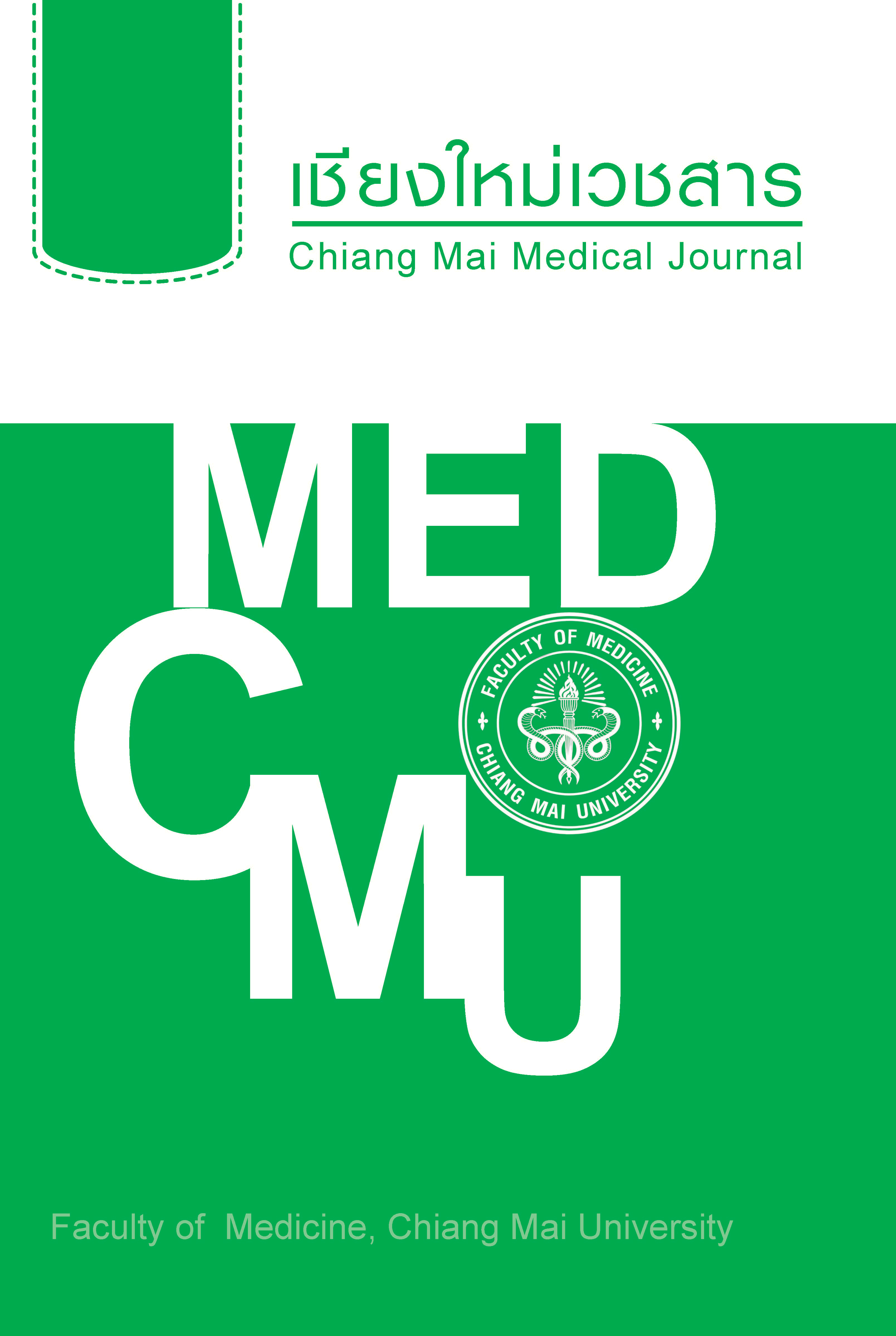Increasing detection rate of Helicobacter pylori infection in nonvariceal upper gastrointestinal bleeding patients by adding histology to the rapid urease test: An experience from Lampang Hospital
Keywords:
upper gastrointestinal bleeding, histology, rapid urease test, Helicobacter pyloriAbstract
Objective To evaluate the detection rate of H. pylori in upper gastrointestinal bleeding (UGIB) patients using the rapid urease test (RUT) alone and in combination with histology.
Methods A prospective study of nonvariceal UGIB patients at the Internal Medicine Ward at Lampang Hospital from January to September 2016. Esophagogastroduodenoscopy (EGD) was performed and biopsy samples from the gastric body and the antrum were collected for RUT and histology to detect H. pylori infection. Detection rates with both strategies alone and in combination were compared using exact probability test.
Results The detection rate of H. pylori infection was 20.7% with RUT alone, 24.8% with histology alone, and 34.5% with a combination of histology and RUT (p =0.006).
Conclusions The detection rate of H. pylori infection among nonvariceal UGIB patients can be increased by adding histology to RUT, especially when RUT is negative. This strategy should be introduced universally to improve overall H. pylori detection rate.
References
Marshall BJ, Warren RM. Unidentifi ed curved ba-cilli in the stomach of patients with gastritis and peptic ulceration. Lancet. 1984;16:1311-15.
Shiotani A, Cen P, Graham DY. Eradication of gastric cancer is now both possible and practical. Semin Cancer Biol. 2013;23:492-501.
Huang JQ, Sridhar S, Hunt RH. Role of Helico-bacter pylori infection and non-steroidal anti-in-fl ammatory drugs in peptic-ulcer disease: a meta-analysis. Lancet. 2002;359(9300):14-22.
Pajares JM. H. pylori infection: its role in chronic gastritis, carcinoma and peptic ulcer. Hepatogas-troenterol. 1995;42:827-41.
Ford AC, Delaney BC, Forman D, Moayyedi P. Eradication therapy for peptic ulcer disease in Helicobacter pylori positive patients. Cochrane Database Syst Rev. 2006; CD003840.
Leodolter A, Kulig M, Brasch H, Meyer-Sabellek W, Willich SN, Malfertheiner P.A meta-analysis comparing eradication healing and relapse rates in patients with Helicobacter pylori-associated gastric or duodenal ulcer. Aliment Pharmacol Ther. 2001;15:1949-58.
Gisbert JP, Khorrami S, Carballo F, Calvet X, Gené E, Dominguez-Muñoz JE. H. pylori eradi-cation therapy vs. antisecretory non-eradication therapy (with or without long-term maintenance antisecretory therapy) for the prevention of recur-rent bleeding from peptic ulcer. Cochrane Data-base Syst Rev. 2004;(2):CD004062.
Malfertheiner P, Megraud F, O’Morain CA, Ather-ton J, Axon AT, Bazzoli F, et al. Management of H. pylori infection – The Maastricht IV/ Florence consensus report. Gut. 2012; 61:646-64.
Lee JM, Bleslin NP, Fallon C, O’Morain CA. Rapid urease test lacks sensitivity in Helicobacter pyloridiagnosis when peptic ulcer disease presents with bleeding. Am J Gastrenterolol. 2000;95:1166-70.
Sony R. Prevalence of H. pylori patients who underwent gastroduodenal endoscopy in Lam-pang regional hospital for dyspepsia and upper GI bleeding. The Bulletin of Lampang Hospital. 1996;17:184-9.
Pankongngam C. Helicobacter pylori infection and etiology of dyspepsia in Lampang Hospital. The Bulletin of Lampang Hospital. 2001;22;94-104.
Barkun AN, Bardou M, Kuipers EJ, Sung J, Hunt RH, Martel M, et al. International consensus rec-ommendations on the management of patients with nonvariceal upper gastrointestinal bleeding. Ann Intern Med. 2010;152: 101-13.
Uotani T, Graham DY. Diagnosis of H. pylori using the RUT. Ann Transl Med. 2015;3:9.
Cha MS. Comparative analysis of histochemical stains about detection of H. pylori in gastric mu-cosa. Korean J Clin Lab Sci. 2007;39:223-30.
El-Zimaity HM, Segura AM, Genta RM, Graham DY. Histologic assessment of Helicobacter pyloristatus after therapy: comparison of Giemsa, Diff-Quik, and Genta stains. Mod Pathol. 1998;11:288-91.
Graham DY, Lew GM, Malaty HM, Evans DG, Ev-ans DJ Jr, Klein PD, et al. Factors infl uencing the eradication of Helicobacter pylori with triple thera-py. Gastroenterology. 1992;102:493-6.
Graham DY, Opekun AR, Hammoud F, Yamaoka Y, Reddy R, Osato MS, et al. Studies regarding the mechanism of false negative urea breath tests with proton pump inhibitors. Am J Gastroenterol. 2003;98:1005-9.
Leung WK, Sung JJ, Siu KL, Chan FK, Ling TK, Cheng AF. False-negative biopsy urease test in bleeding ulcers caused by the buffering effects of blood. Am J Gastroenterol. 1998;93:1914-8.
Gisbert JP, Abraira V. Accuracy of Helicobacter py-lori diagnostic tests in patients with bleeding pep-tic ulcer: a systematic review and meta-analysis. Am J Gastroenterol. 2006;101:848-63.
Suchartlikitwong S, Lapumnuaypol K, Rerknimitr R, Werawatganon D. Epidermiology of upper gas-trointestinal bleeding and Helicobacterpylori infec-tion: review of 3,488 Thai patients. Asian Biomed. 2015;9:87-93.
Downloads
Published
How to Cite
Issue
Section
License
Copyright (c) 2017 Chiang Mai Medical Journal

This work is licensed under a Creative Commons Attribution 4.0 International License.








